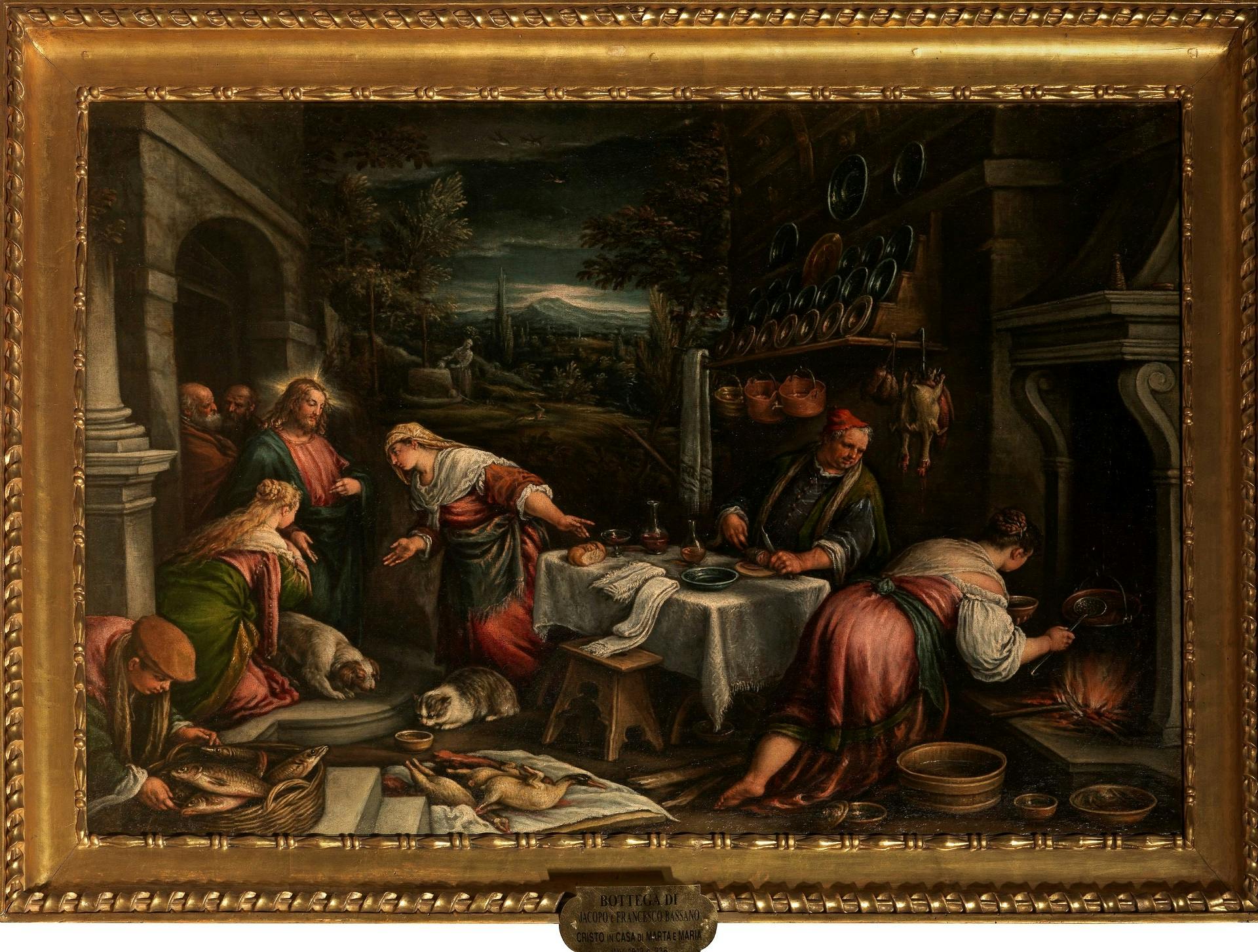Christ in the House of Martha, Mary and Lazarus
Jacopo and Francesco dal Ponte known as I Bassano (Bassano del Grappa 1515 – 1592) / (Bassano c. 1549 – Venice 1592) and workshop
The scene depicted is from an episode in the Gospel of Luke (Lk 10:38–42) which tells of how the two sisters Martha and Mary Magdalene invite Jesus to their home but while Marta is busy offering the best hospitality, Mary sits down to listen to the word of the Son of God. When Martha complains, deprived of her sister’s help, Jesus answers: “Martha, Martha, you are anxious and worried about many things but there is need of only one thing. Mary has chosen the better part and it will not be taken from her.” The profound message of the episode is to give precedence to looking after the spirit and interior religiosity over daily practical needs. But the Bassanos’ painting, with such an animated depiction of the large kitchen and the table laid with food of all kinds, leaves little space for the religious aspect of the story, used as a pretext for the scene: for example, look at the figure of Jesus, who seems to be somehow detached from the large domestic environment, recognizable only thanks to the luminous halo that distinguishes him.
The description of the environment dominates everything: the large rustic kitchen opens onto an open hilly landscape – typical of the Veneto region– and is equipped with various kinds of utensils, copper pots, tin dishes, bowls and sieves; a kitchen where the opulence of food triumphs with a great variety of poultry and fish. In the foreground a cook is bending over a large crockpot in which she is making soup, and Lazarus is looking at its meal avidly. Of course the vices of greed and gluttony are contrasted with the virtues of the spirit and sacrifice but the scene as a whole is a pleasant description of a domestic environment at the end of the 16th century.
Probably due to the depiction of the pleasantness that surrounds the moral content, this picture was extraordinary successful compared to other Venetian paintings from the 1570s. A large number of replicas and variations are kept in Italian and European museums and abroad.
The prototype can be recognized in Jacopo Bassano’s work, executed in collaboration with his eldest son Francesco. Bassano’s younger sons, Leandro and Gerolamo, also worked in his workshop.
